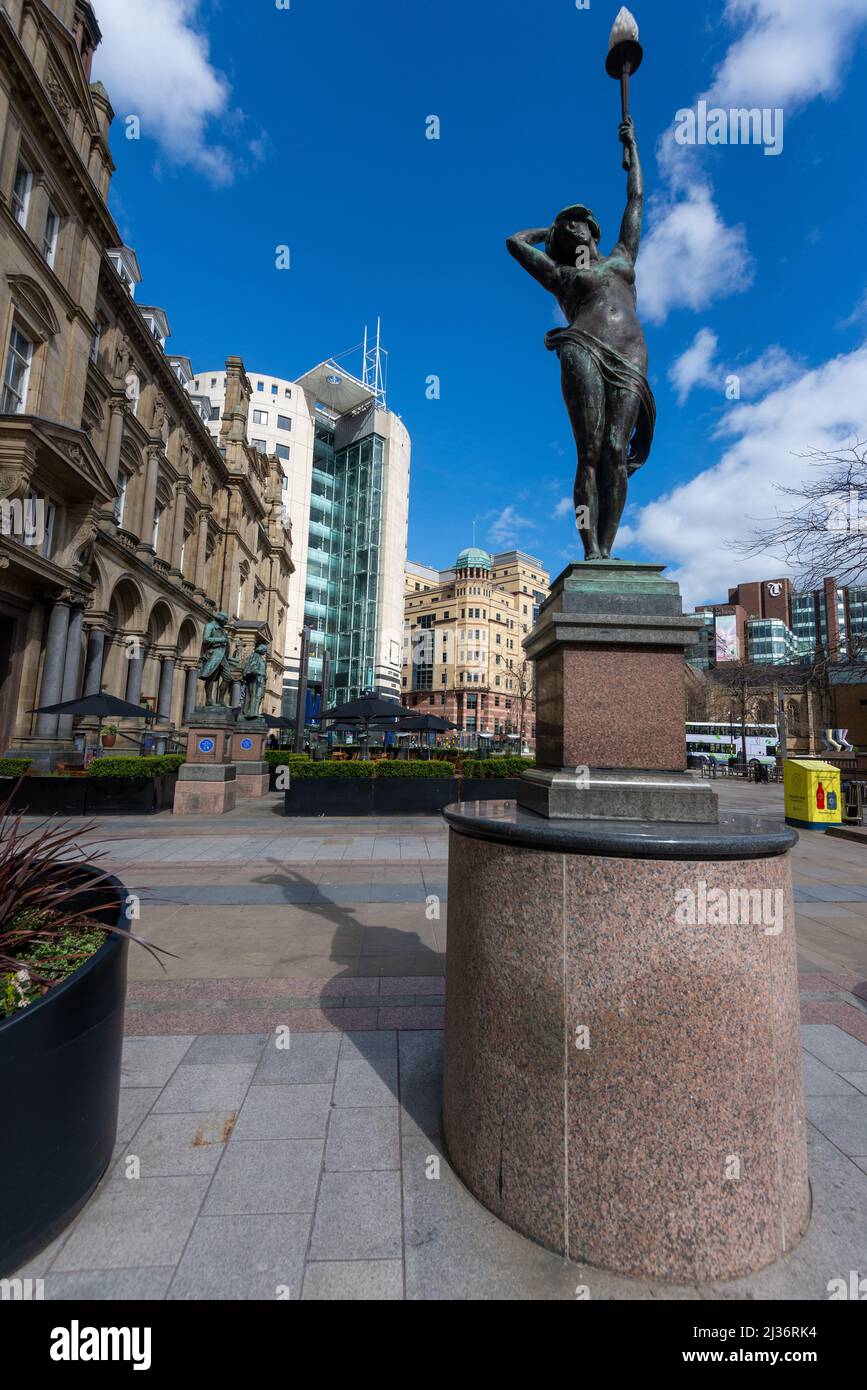Leeds City Square with one of the Nymph statues by Alfred Drury, she is one of the Nymphs called Even with her hand to her head the others being Morn.

Image details
Contributor:
Jim Gibson / Alamy Stock PhotoImage ID:
2J36RK4File size:
69.1 MB (3.6 MB Compressed download)Releases:
Model - no | Property - noDo I need a release?Dimensions:
4016 x 6016 px | 34 x 50.9 cm | 13.4 x 20.1 inches | 300dpiDate taken:
3 April 2022More information:
City Square is a paved area north of Leeds railway station at the junction of Park Row to the east and Wellington Street to the south. It is a triangular area where six roads meet: Infirmary Street and Park Row to the north, Boar Lane and Bishopsgate Street to the south-east, and Quebec Street and Wellington Street to the south-west. The only building with a direct frontage is the former General Post Office, on the north-west side. The most controversial feature of the square was a ring of eight nude females holding lamps, which attracted critical letters to the Yorkshire Post when unveiled in 1899. They are by Alfred Drury, now celebrated as a pioneer of the New Sculpture. They are of two forms, one named as "Morn" holding a lamp in her right hand and clutching some flowers, and the other named as "Even" holding a lamp in her left hand, with her other hand to her head. They were originally arranged on the points of the compass in a circle around the Black Prince. In 1956 they were removed from this arrangement and put in two rows of four. In the 1990s, it was planned to remove them altogether, as Victorian public art was considered by many to be worthless. However, this was resisted and they were placed in their present positions of a three-quarter circle.